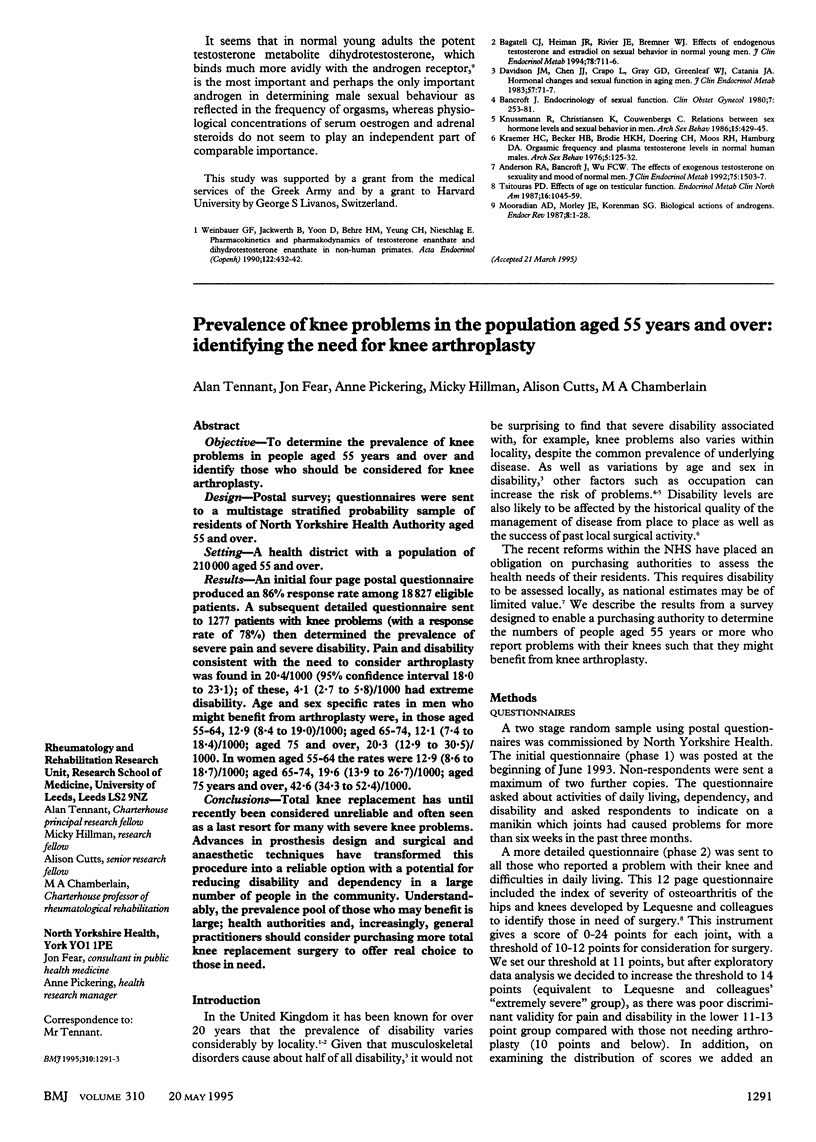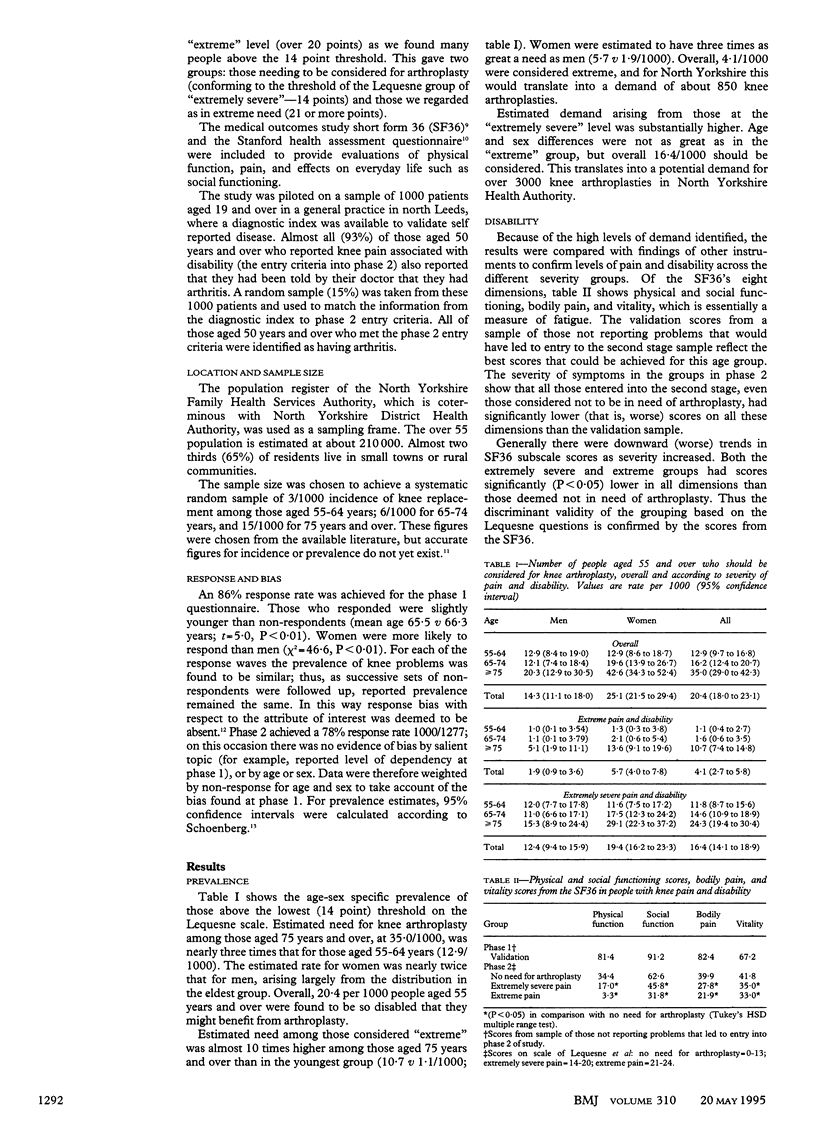Abstract
OBJECTIVE--To determine the prevalence of knee problems in people aged 55 years and over and identify those who should be considered for knee arthroplasty. DESIGN--Postal survey; questionnaires were sent to a multistage stratified probability sample of residents of North Yorkshire Health Authority aged 55 and over. SETTING--A health district with a population of 210,000 aged 55 and over. RESULTS--An initial four page postal questionnaire produced an 86% response rate among 18,827 eligible patients. A subsequent detailed questionnaire sent to 1277 patients with knee problems (with a response rate of 78%) then determined the prevalence of severe pain and severe disability. Pain and disability consistent with the need to consider arthroplasty was found in 20.4/1000 (95% confidence interval 18.0 to 23.1); of these, 4.1 (2.7 to 5.8)/1000 had extreme disability. Age and sex specific rates in men who might benefit from arthroplasty were, in those aged 55-64, 12.9 (8.4 to 19.0)/1000; aged 65-74, 12.1 (7.4 to 18.4)/1000; aged 75 and over, 20.3 (12.9 to 30.5)/1000. In women aged 55-64 the rates were 12.9 (8.6 to 18.7)/1000; aged 65-74, 19.6 (13.9 to 26.7)/1000; aged 75 years and over, 42.6 (34.3 to 52.4)/1000. CONCLUSIONS--Total knee replacement has until recently been considered unreliable and often seen as a last resort for many with severe knee problems. Advances in prosthesis design and surgical and anaesthetic techniques have transformed this procedure into a reliable option with a potential for reducing disability and dependency in a large number of people in the community. Understandably, the prevalence pool of those who may benefit is large; health authorities and, increasingly, general practitioners should consider purchasing more total knee replacement surgery to offer real choice to those in need.
Full text
PDF


Selected References
These references are in PubMed. This may not be the complete list of references from this article.
- Cooper C., McAlindon T., Coggon D., Egger P., Dieppe P. Occupational activity and osteoarthritis of the knee. Ann Rheum Dis. 1994 Feb;53(2):90–93. doi: 10.1136/ard.53.2.90. [DOI] [PMC free article] [PubMed] [Google Scholar]
- Croft P., Cooper C., Wickham C., Coggon D. Osteoarthritis of the hip and occupational activity. Scand J Work Environ Health. 1992 Feb;18(1):59–63. doi: 10.5271/sjweh.1608. [DOI] [PubMed] [Google Scholar]
- Fertig A., Roland M., King H., Moore T. Understanding variation in rates of referral among general practitioners: are inappropriate referrals important and would guidelines help to reduce rates? BMJ. 1993 Dec 4;307(6917):1467–1470. doi: 10.1136/bmj.307.6917.1467. [DOI] [PMC free article] [PubMed] [Google Scholar]
- Kirwan J. R., Currey H. L., Freeman M. A., Snow S., Young P. J. Overall long-term impact of total hip and knee joint replacement surgery on patients with osteoarthritis and rheumatoid arthritis. Br J Rheumatol. 1994 Apr;33(4):357–360. doi: 10.1093/rheumatology/33.4.357. [DOI] [PubMed] [Google Scholar]
- Kirwan J. R., Reeback J. S. Stanford Health Assessment Questionnaire modified to assess disability in British patients with rheumatoid arthritis. Br J Rheumatol. 1986 May;25(2):206–209. doi: 10.1093/rheumatology/25.2.206. [DOI] [PubMed] [Google Scholar]
- Liang M. H., Cullen K. E., Larson M. G., Thompson M. S., Schwartz J. A., Fossel A. H., Roberts W. N., Sledge C. B. Cost-effectiveness of total joint arthroplasty in osteoarthritis. Arthritis Rheum. 1986 Aug;29(8):937–943. doi: 10.1002/art.1780290801. [DOI] [PubMed] [Google Scholar]
- Ware J. E., Jr, Sherbourne C. D. The MOS 36-item short-form health survey (SF-36). I. Conceptual framework and item selection. Med Care. 1992 Jun;30(6):473–483. [PubMed] [Google Scholar]


